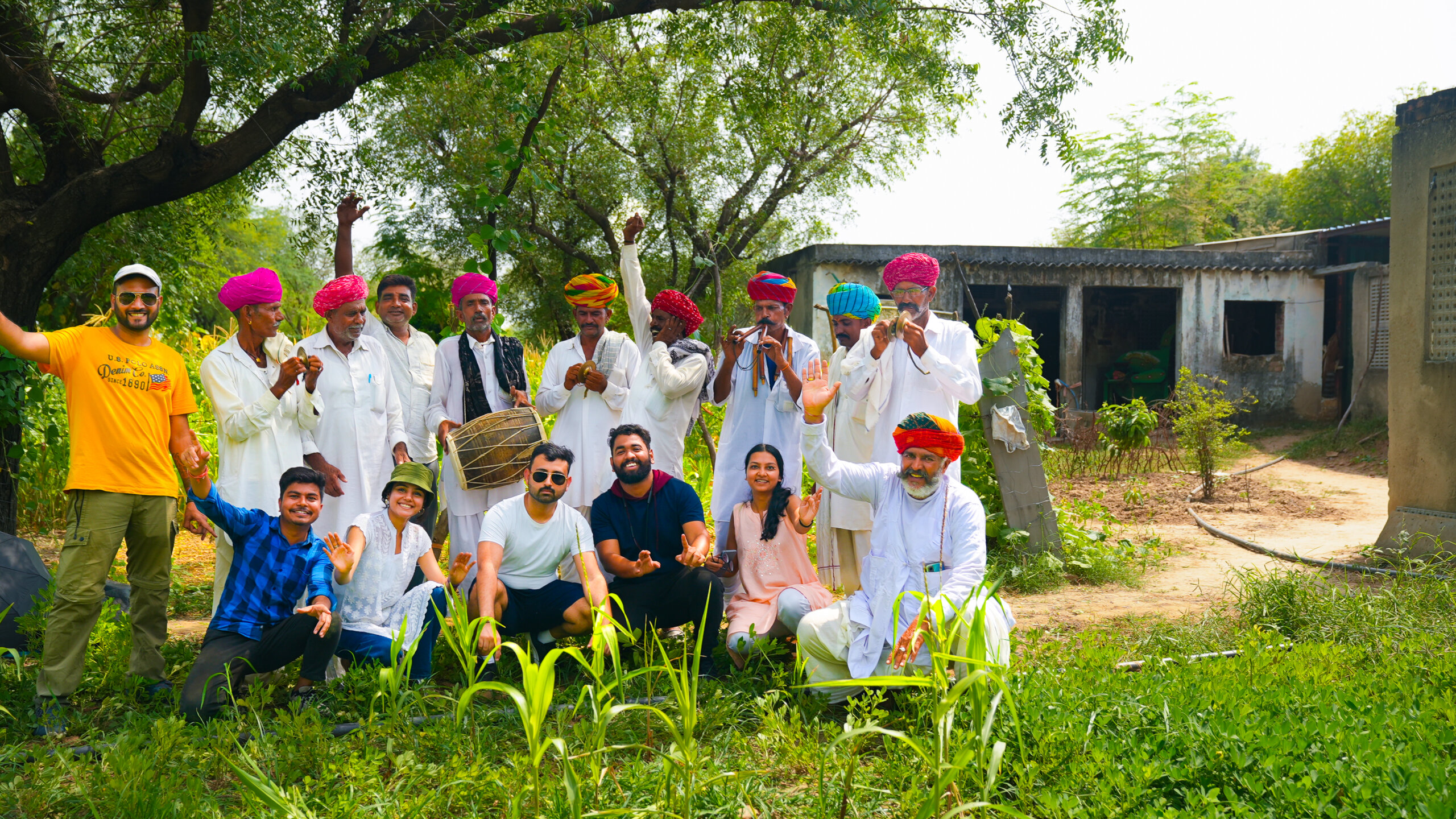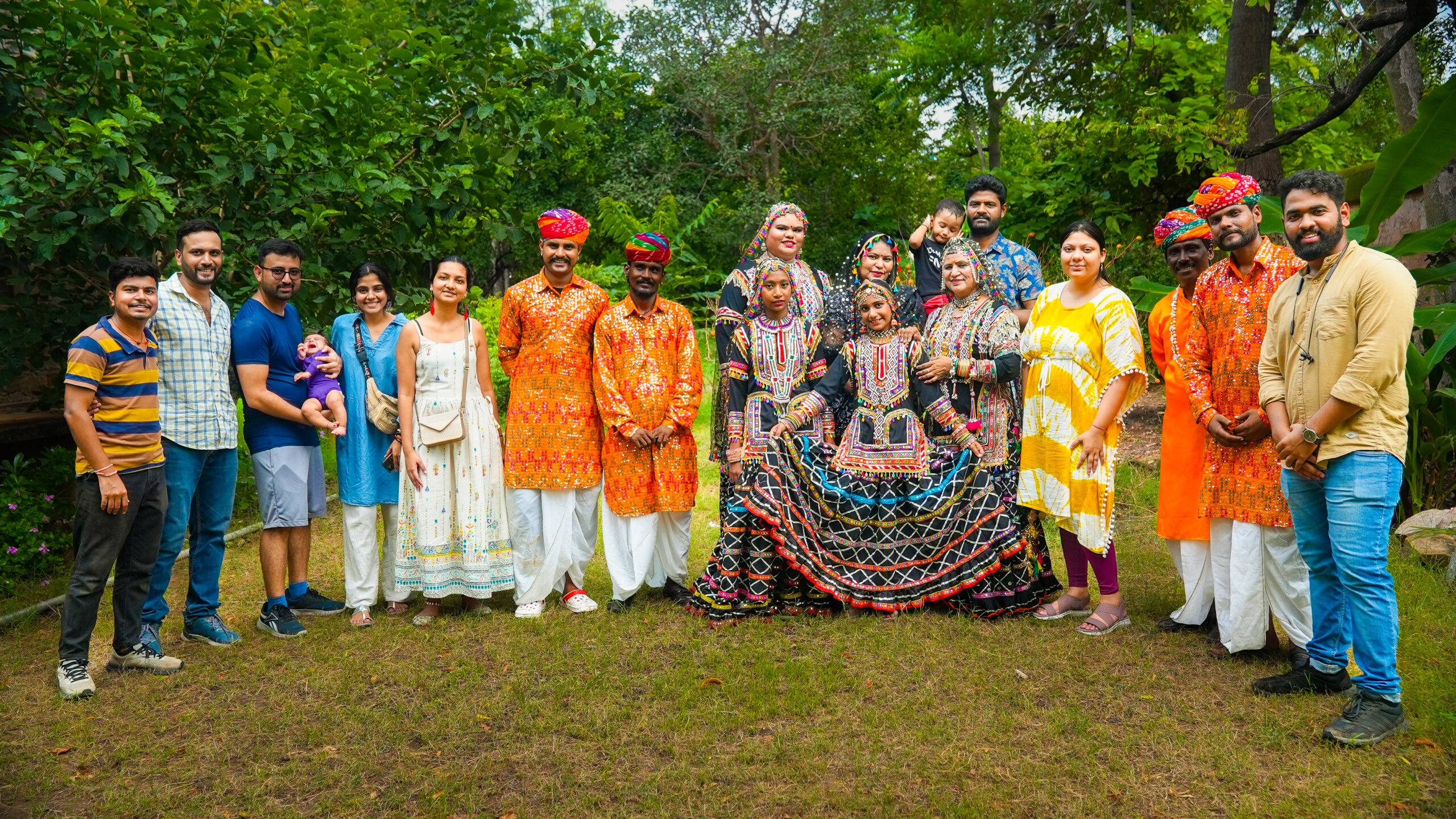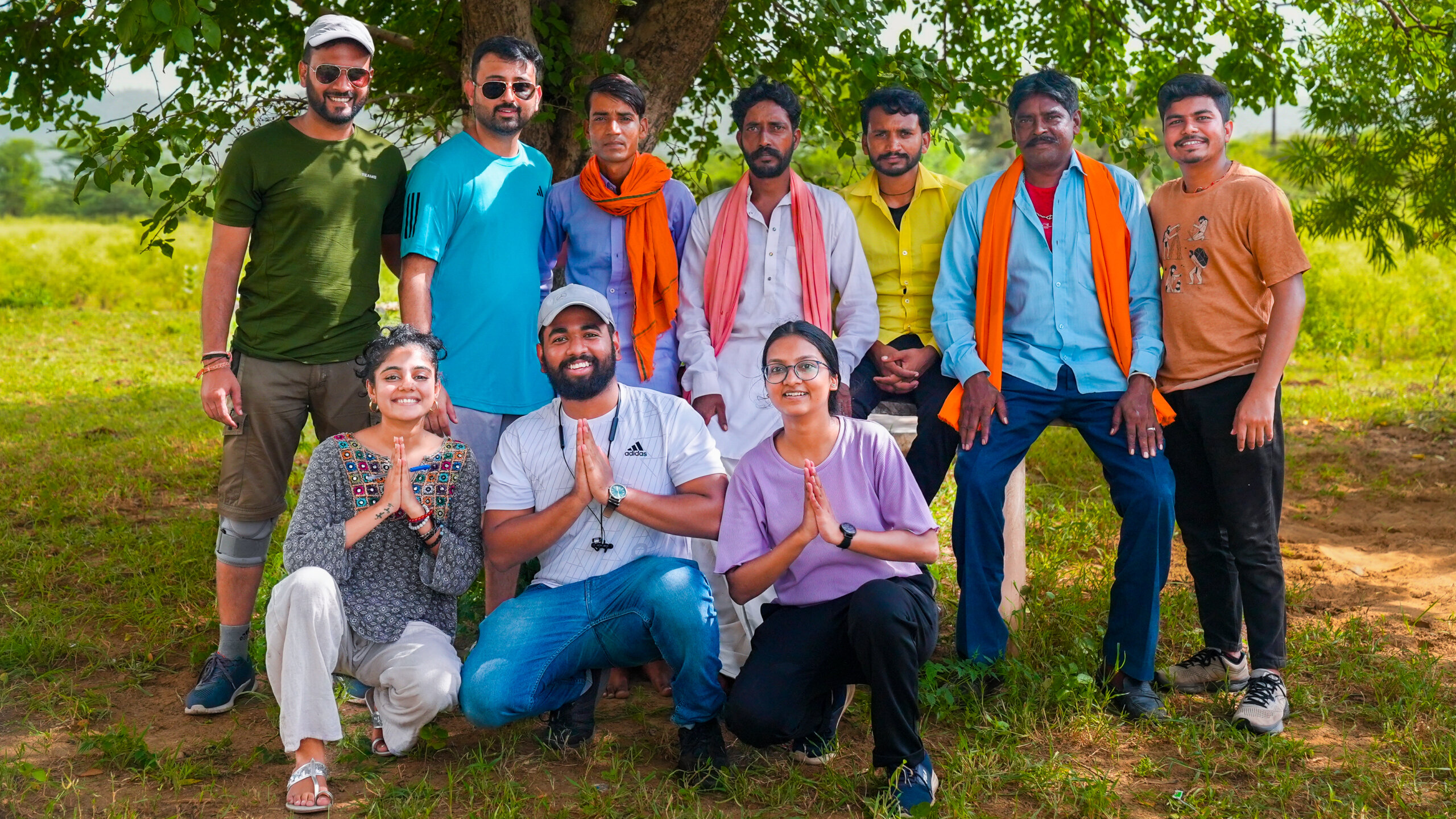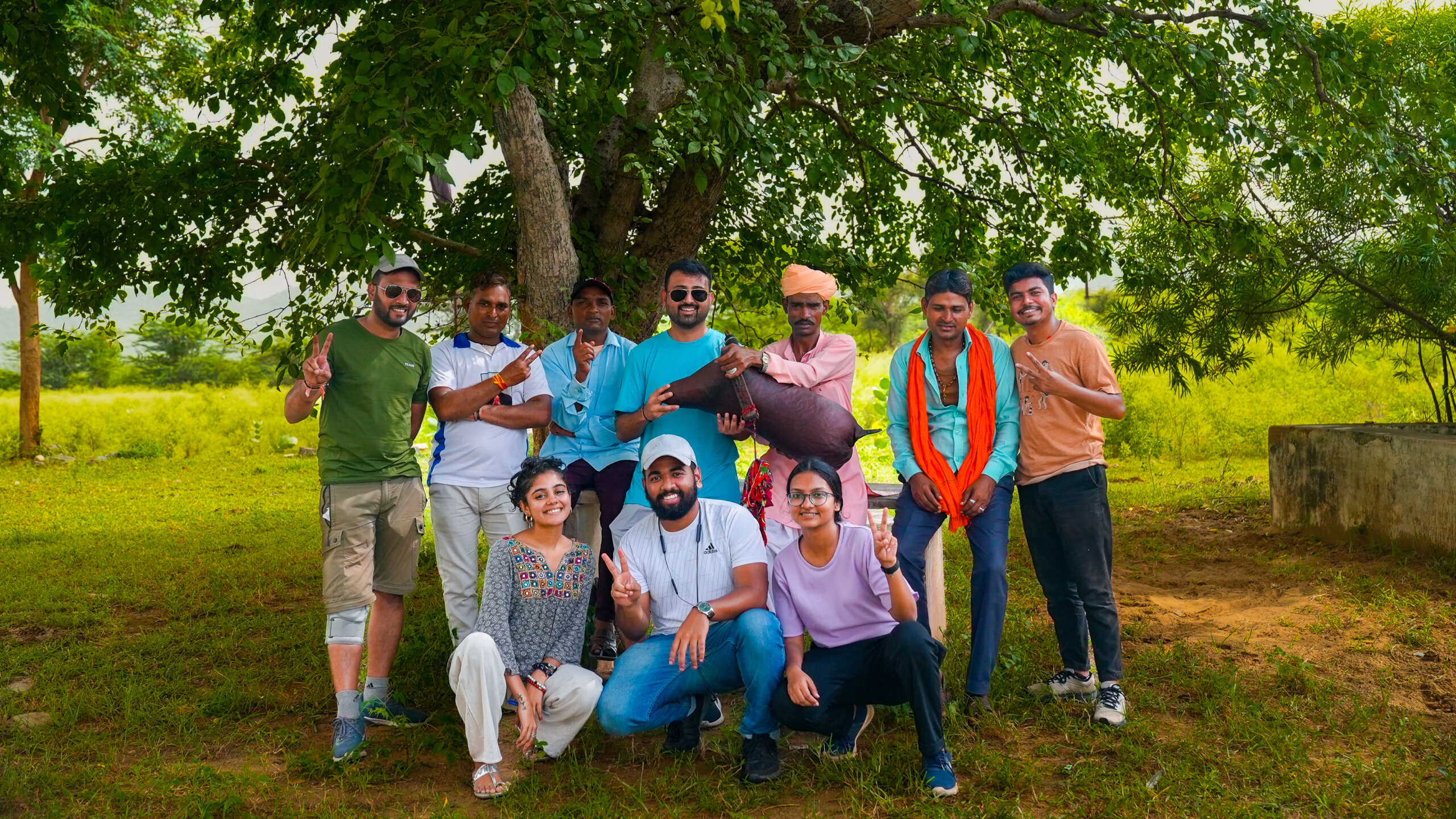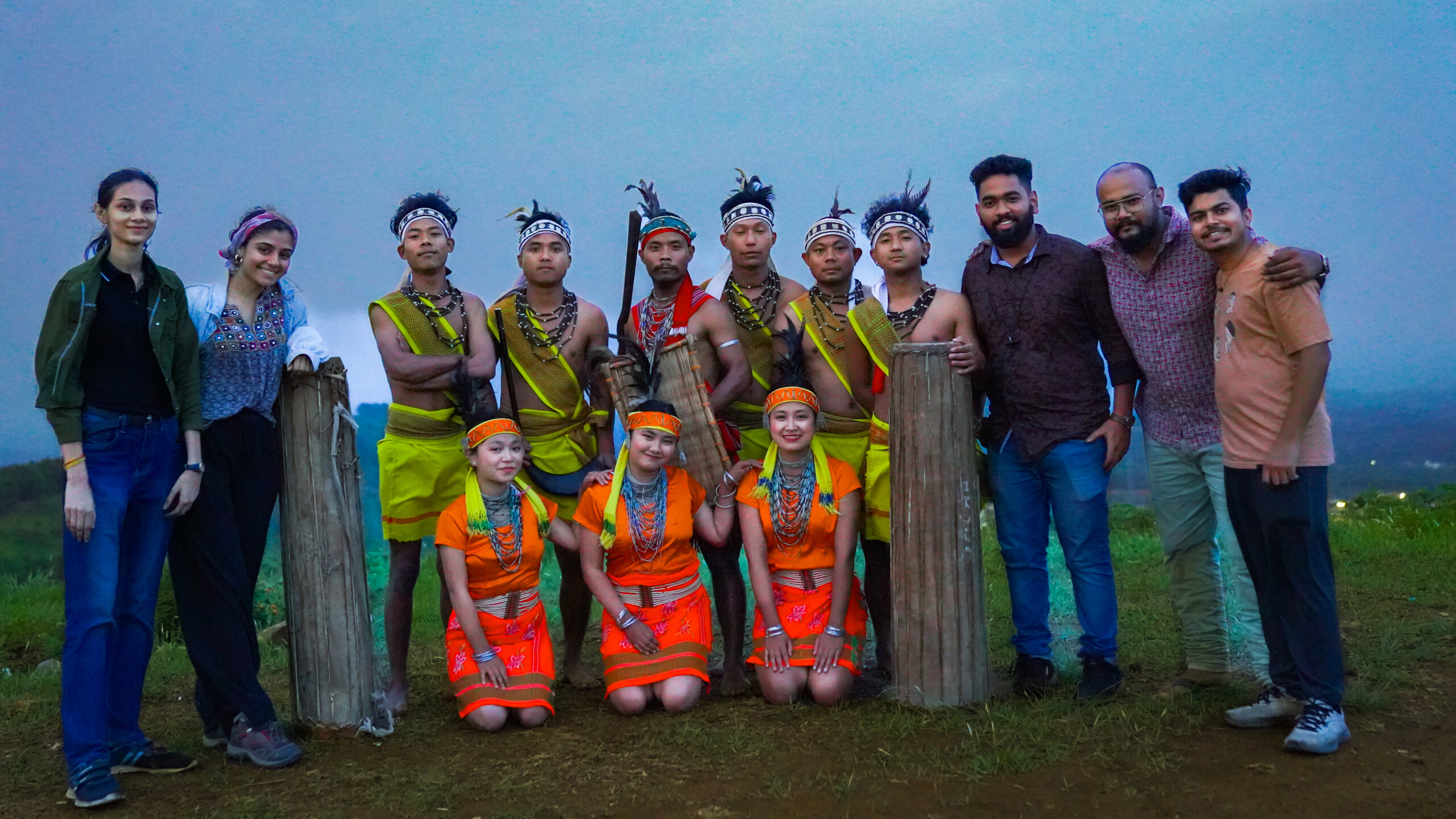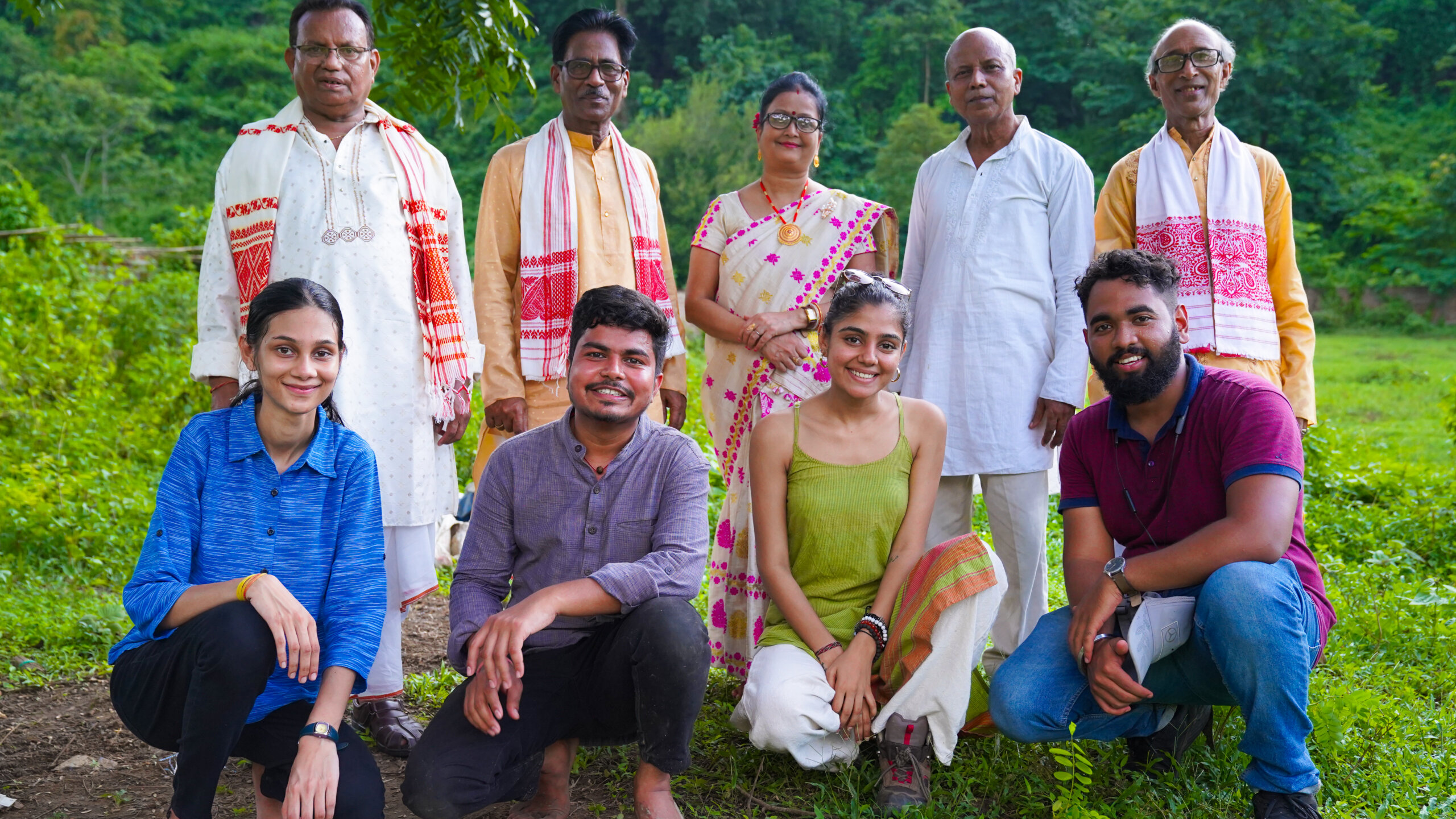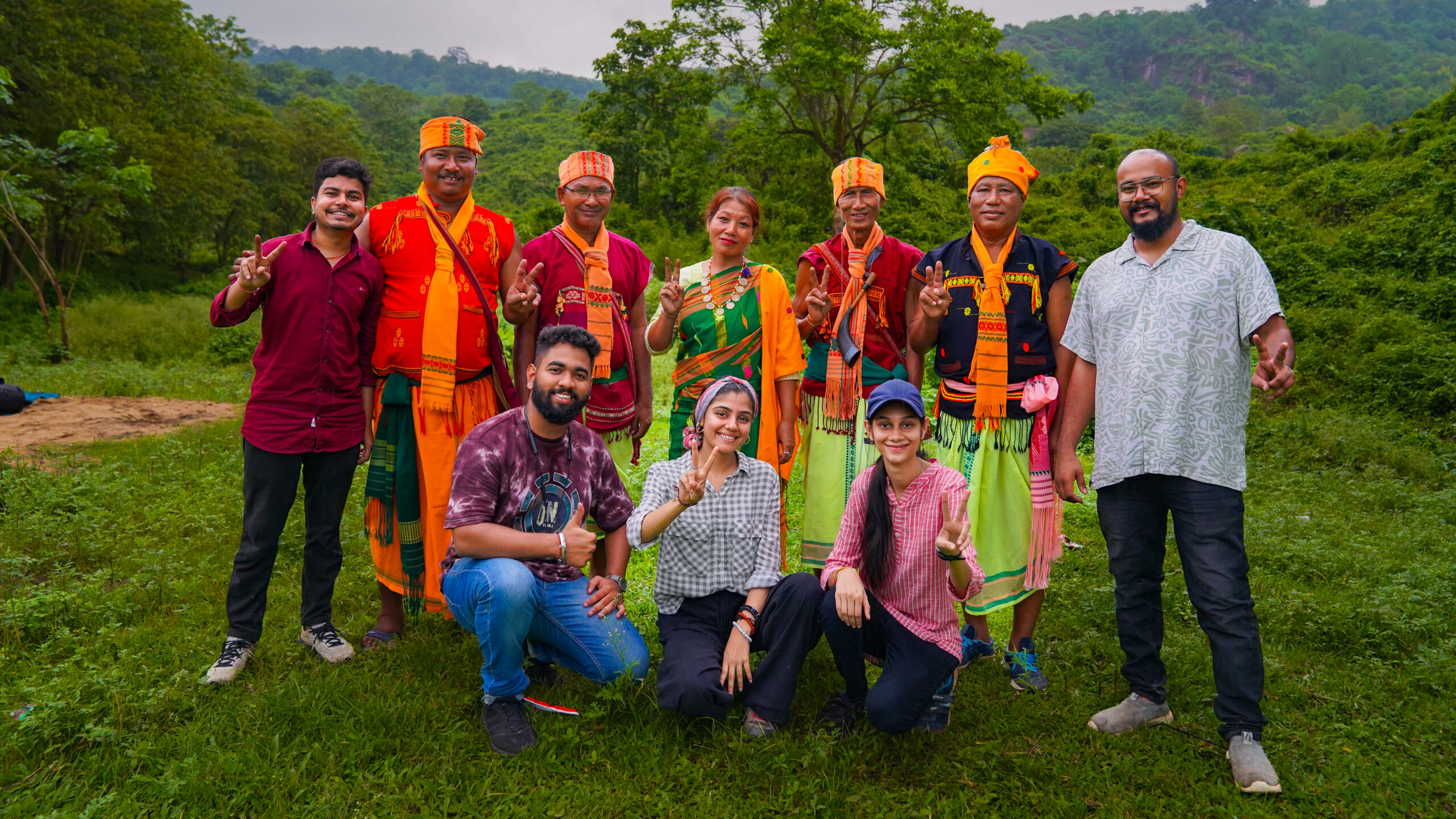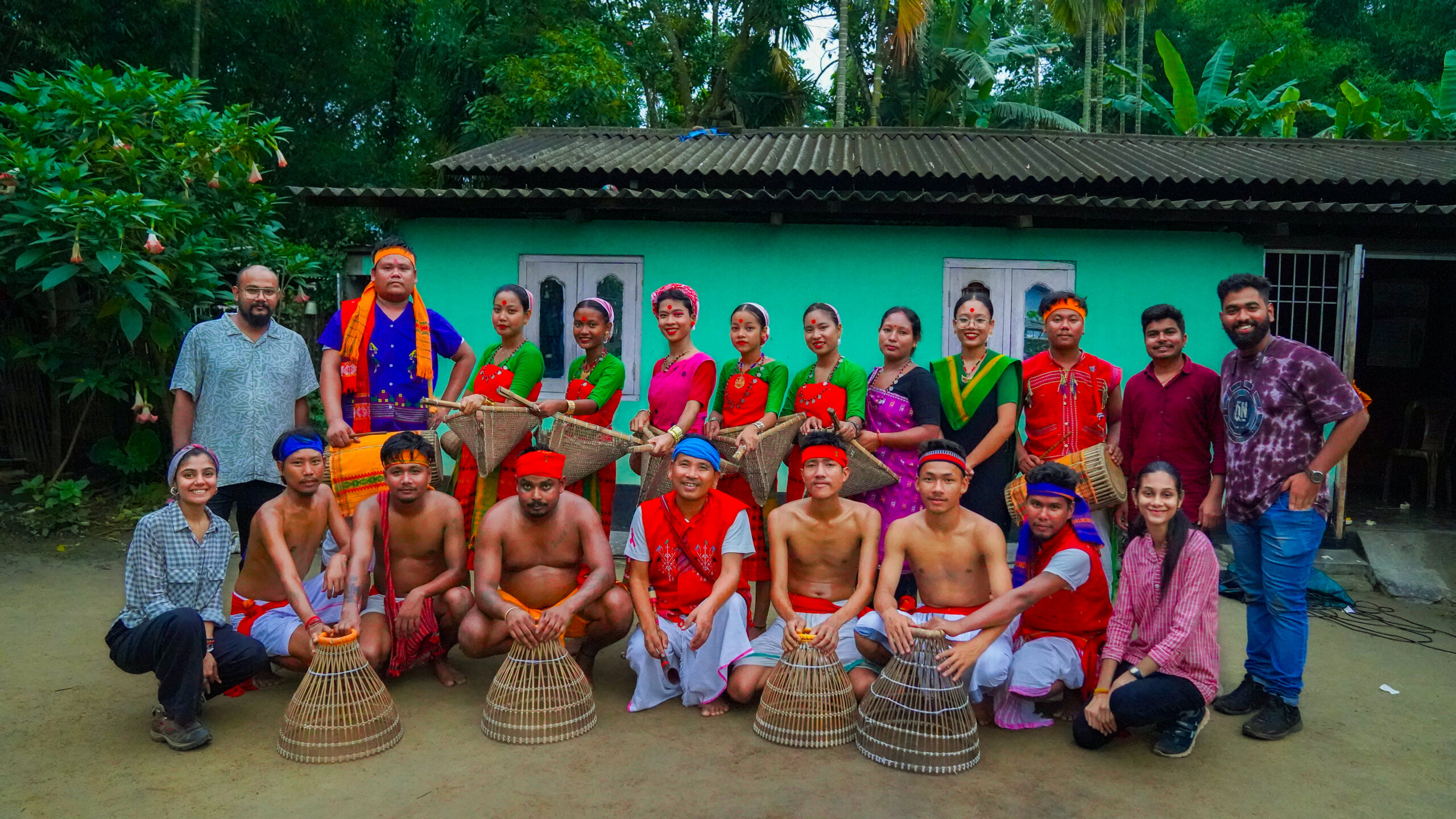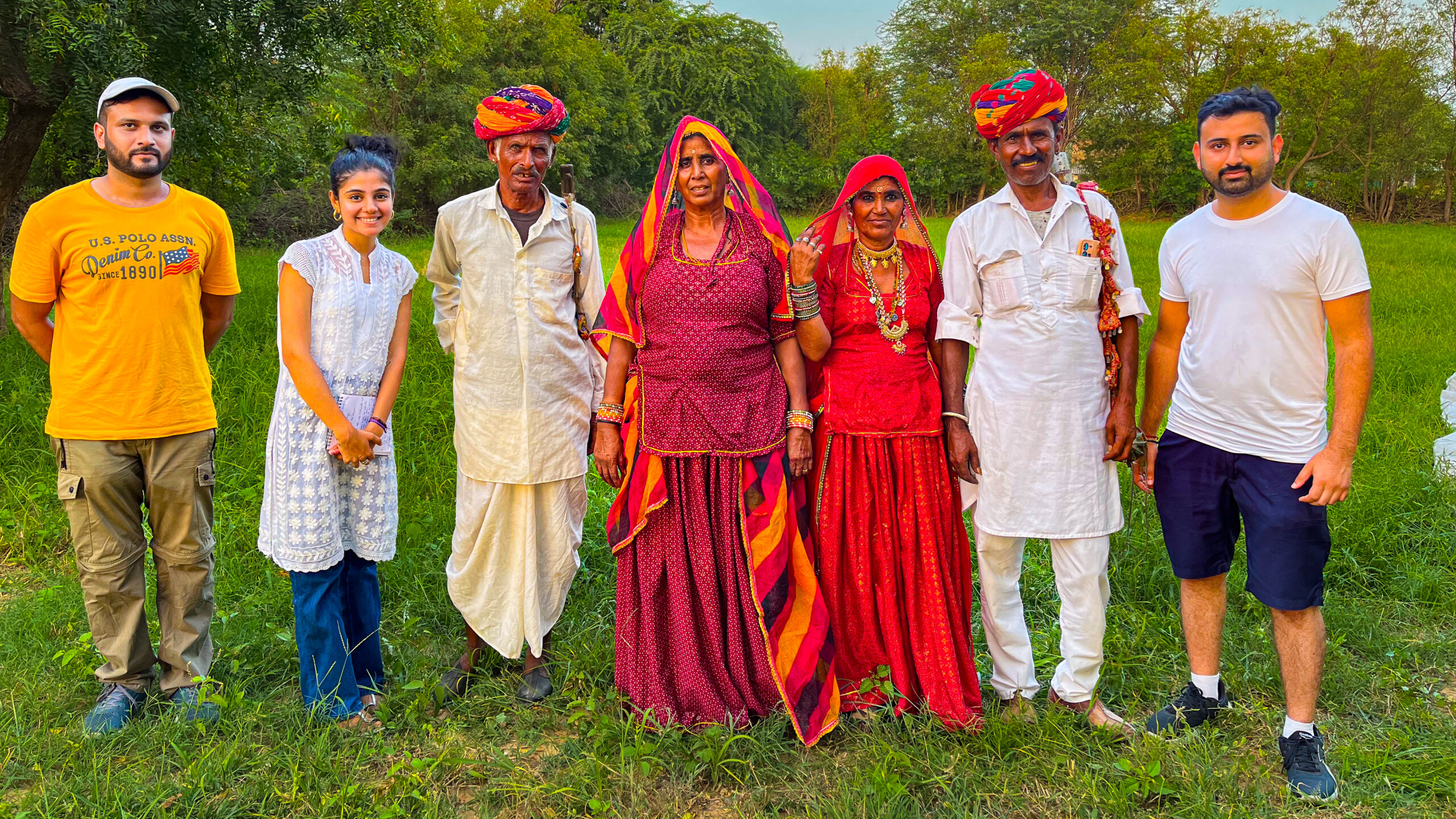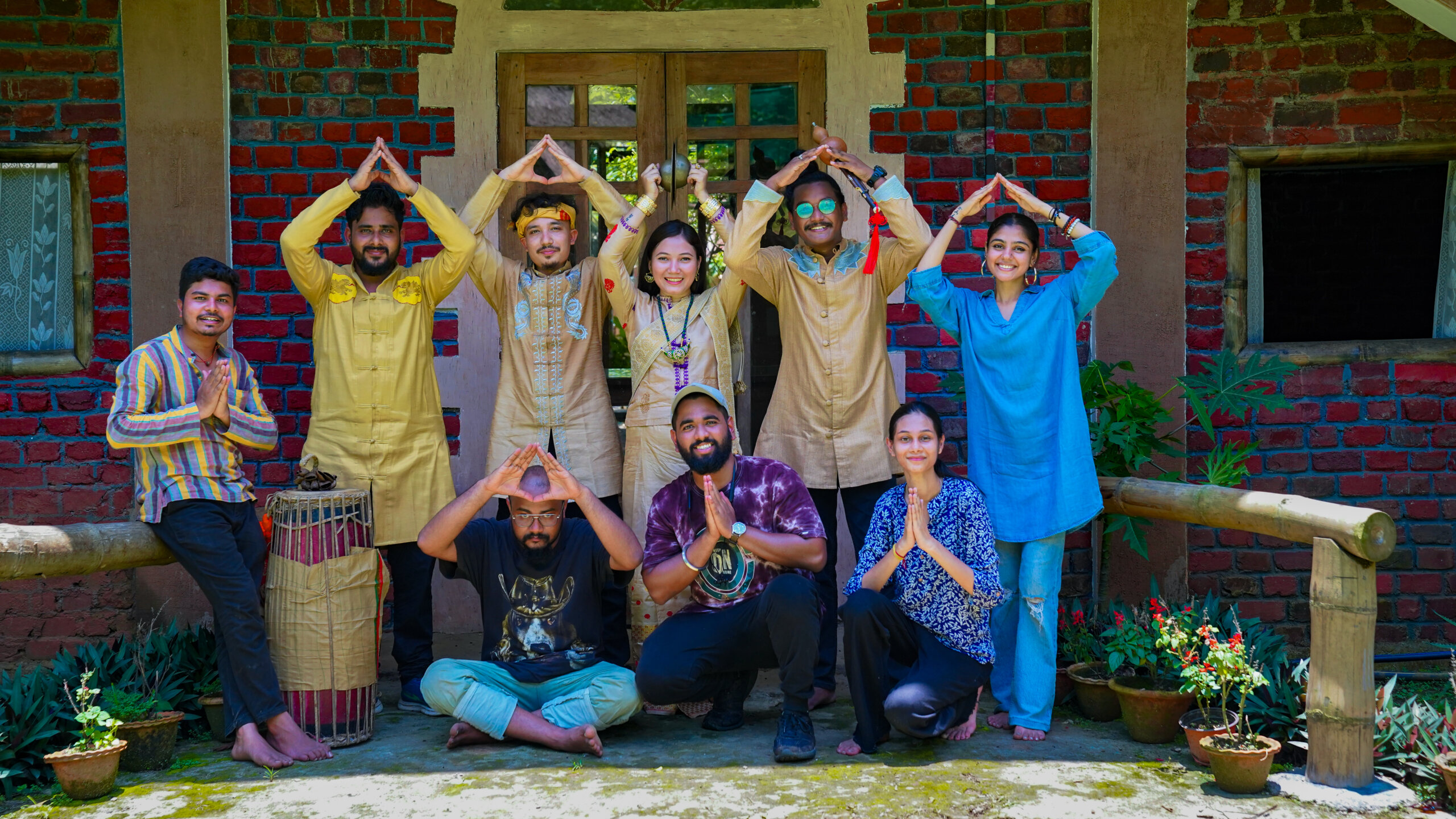Singing to a bird, a Songbird herself: Kamrupi Lokgeet
A true songbird, a household name from Assam, Pranitha Baishya Medhi’s voice is a melodious and soothing delight. She is widely recognized as a pioneer of Kamrupi lokgeet, showcasing her exceptional talent and leaving an everlasting impact on the folk music scene.
Pranitha’s Kamrupi Lok Sangeet group was a refreshing oasis on a sunny day in Guwahati, awakening our senses with its energizing and soothing melodies.
Talking Kamrupi Sangeet, it holds a significant place in the cultural fabric of Assam, specifically originating from the Kamrup region, which encompasses parts of present-day Assam and neighboring areas. The Kamrup region, historically known as Kamrupa, has been a hub of cultural and artistic activities, contributing to the diverse musical heritage of the region.
The history of Kamrupi folk music traces back to ancient times, with influences from various sources. The assimilation of tribal melodies, Vedic chants, and regional customs has shaped the unique musical landscape of the region.
At the core of Kamrupi folk music lies a deep-rooted philosophy that celebrates the interconnectedness of nature, humans, and the divine. The songs often convey spiritual themes, portraying a harmonious relationship between individuals and their surroundings. These musical narratives serve as a medium to explore the human condition, philosophical concepts, and societal values, while also preserving cultural heritage.
The songs of Kamrupi culture also embody a remarkable specialization in the art of storytelling. Through poetic verses and melodies, the folk music tradition carries forward oral histories, mythological tales, and everyday experiences. This oral tradition has been passed down through generations, keeping the culture alive and thriving.
This folk music showcases the region’s diversity, with different subgenres representing various communities. Bihu, Goalpariya, Kamrupiya Lokgeet, and Ojapali are some of the prominent styles that highlight the cultural vibrancy and social fabric of the Kamrupi people.
One notable aspect of Kamrupi folk music is its enchanting fusion of traditional instruments, which adds a captivating flavour to the compositions. Instruments like the dhol, dotara, pepa, flute, taal, and khutitaal create a soul-stirring and distinct sound that transports listeners to another realm.
The group members skillfully employed these instruments, evoking the vibrant essence of nature and uplifting our spirits. As the sun set, their mesmerizing melodies had a profound effect, soothing us with the richness of their voices and the harmonious interplay of their instruments.
Their first song, called “O Phuleswari” “is a heartfelt Kamrupi folk song from Assam, India, narrating the tale of a village girl named Phuleswari.
With the lyrics that goes like –
“O Phuleswari Bukure Lagori”
(Oh Phuleswari, companion of my heart)
“Kenke jao ghuri gaonor maya ari”
(Leaving the daughter of the village behind, how can I return,?)
The song encapsulates the emotions and sentiments surrounding her departure, evoking a profound sense of longing and addressing the deep connection she shares with the protagonist. Through vivid imagery and reflections, the song portrays Phuleswari’s innocence, vulnerability, and the impact of her departure on loved ones. “Oh Phuleswari” beautifully captures the universal experience of love, longing and the lasting impact individuals leave on their communities.
While the second song is truly a heartwarming one called “O Shalki”, Shalki refers to the bird Myna. The lyrics start off with –
O Shalki suti Salki
(Oh myna, … my little myna)
Kon dexe jabi
(Where are you flying away?)
O Aamar dexe jabi salki
(Do fly along our way oh myna,)
Aaike lag pabi
(You’ll meet my mother there.)
The song tells a heartfelt story of longing and the desire for family connections. It follows the journey of a myna bird, symbolizing a messenger, encountering various characters along the way. The lyrics evoke emotions of sadness, hope, and anticipation, capturing the ache of separation and yearning for loved ones. The song beautifully portrays the universal human experience of longing for family, belonging, and the warmth of home, emphasizing the importance of these deep bonds.
As mentioned earlier, Kamrupi songs have a unique storytelling quality, where the lyrics encapsulate a wide range of emotions and come to life with heartfelt expressions. The way these songs were delivered by the group left us completely enthralled, as their performance was an exquisite blend of emotion and melody.
In a nutshell, Pranitha’s group wove musical spells that embraced our hearts from the very first note, entwining us in their melodies until the very end. Their songs became delightful earworms, gracefully dancing in our minds and surfacing in moments of joy.
The group had Pranitha Baishya Medhi on vocals, Kanak Medhi on the dotara (string), Rajkumar Rabidas & Nikunja Medhi on minor percussion instruments and Nikunja Pathak on the bansi (flute). Together, they created a magical soundscape that shall assuredly resonate with anyone.
– Meghal Sharma (Research Fellow)
